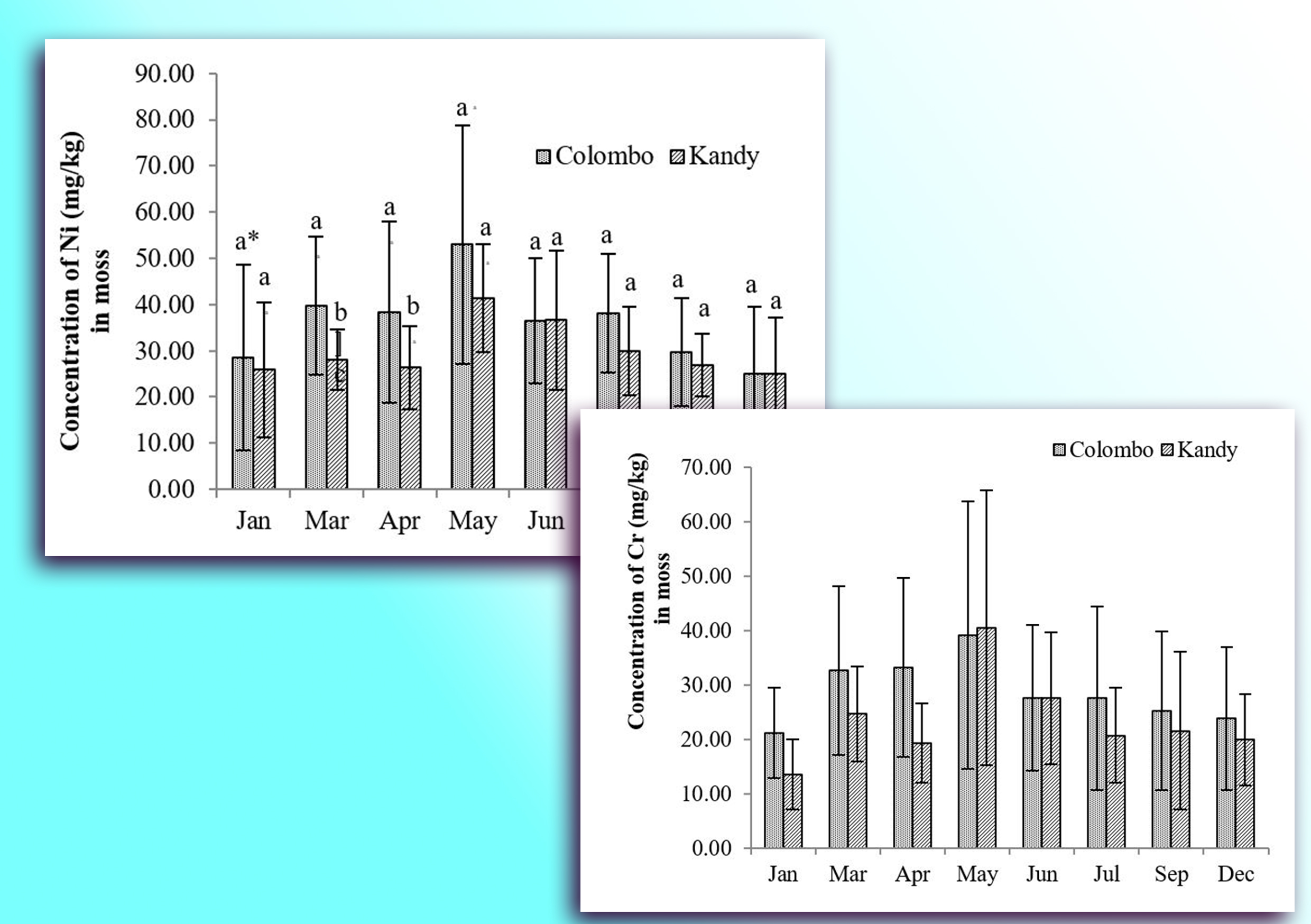An Assessment of Transboundary Pollution from Colombo to Kandy on the Atmospheric Deposition of Heavy Metals Using Moss (Hyophila involuta)
##plugins.themes.academic_pro.article.main##
Abstract
Kandy has been known to be as one of the highest air polluted cities in Sri Lanka even without lac of point anthropogenic sources other than the traffic congestion inside the city. Therefore, this study was done to assess the transboundary air pollution effect from Colombo to Kandy using Moss (Hyophila involuta) as a biomonitor. Atmospheric deposition of five heavy metals (Cu, Pb, Ni, Cr and Cd) was monitored using moss collected from Colombo and Kandy, from March 2013 to January 2014. The concentrations of Cu, Pb, Ni, Cr and Cd were analysed by atomic absorption spectrometer (AAS) and the results obtained for both sampling were compared with the monsoon pattern of Sri Lanka. Cu accumulation in moss around Kandy has been influenced by the brass industries at Pilimathalawa. The cross-boundary effect from Colombo to Kandy during the southwest (SW) monsoon was elevated the accumulation of Ni and Cr in moss around Kandy.

